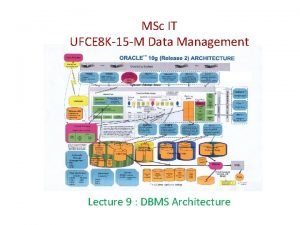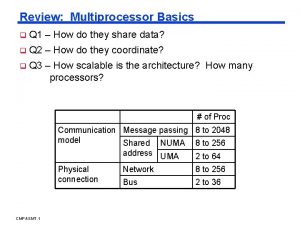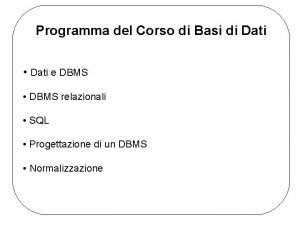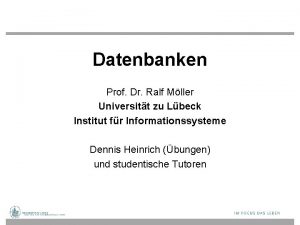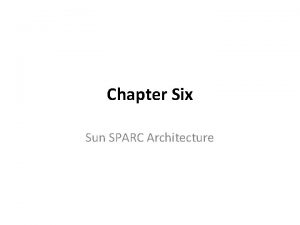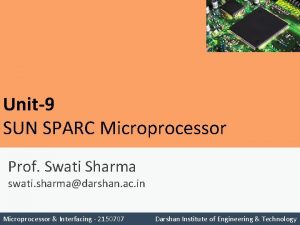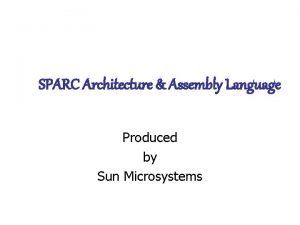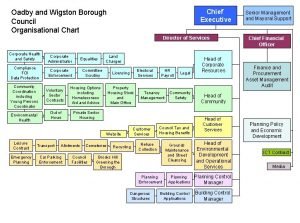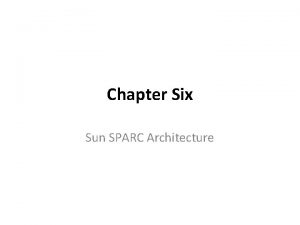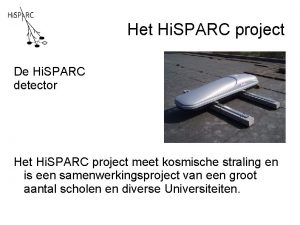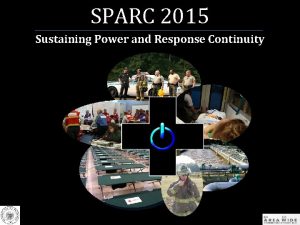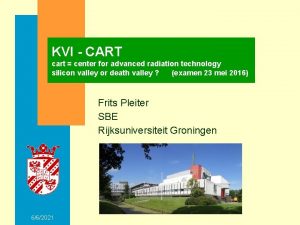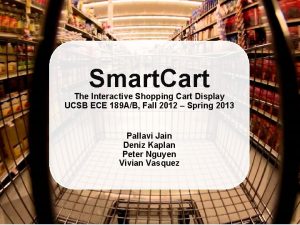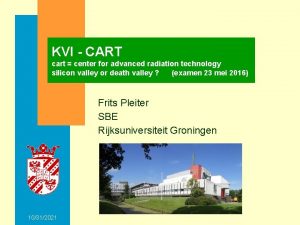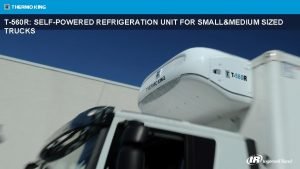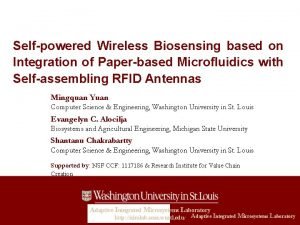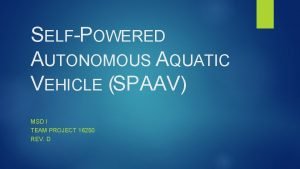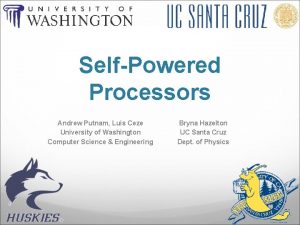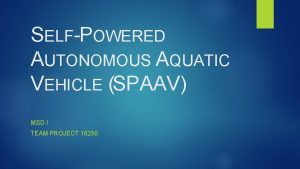SelfPowered Automated Refuse Cart SPARC Group 12 Alexis






































- Slides: 38

Self-Powered Automated Refuse Cart (SPARC) Group 12 Alexis Drayton Sean Mc. Garvey Sponsored By: Chris Vento Wyatt Schmitz

Project Motivation ● Automation of simple domestic tasks ● Accessibility for those who cannot physically move trash ● Quality of life improvement for people with abnormal working schedules

Goals and Objectives ● Autonomously carry a Garbage Bin down a driveway to a curb, and return back to a charging station, based on a schedule. ● Detects and Avoid obstacles. ● Schedule setting, Manual control available through a mobile application ● Autonomously connects to recharging station


Specifications and Requirements ● Capable of carrying up to 50 lbs. ● User Interface with a Mobile Application ● Battery capacity of 20 Ah ● User manual control ● 1 camera for destination recognition ● Collision avoidance capabilities up to 2 meters ● Chassis no smaller than Trash can (2 ft x 2 ft)

Operating Procedure ● User Sets the schedule on the application and calibrates a base path ● ● ● ● from curbside to the home base. GPS location is saved at both points. Once the path is set, SPARC remains in standby until schedule is triggered. Wake up on schedule interrupt. Follow the reverse path checking for destination location as it goes. Drives to Pixy Cam tag until it can’t see it. Standby for a wait period for trash collection. Once wait period ends, return to home base and remains in standby until next schedule interrupt.

Hardware Overview

Charging Platform (Home Base) ● Plugs into standard 120 V AC Wall outlet. ● AC/DC Laptop Charger with Barrel Jack ○ 18 V, 3 A Output ● Three 2 A 16 V Regulators for output to Main Unit ● One 2 A 3. 3 V Regulator to power RF Receivers. ● Two RF Receivers (315 MHz and 433 MHz), into SR NOR Latch to enable or disable output from 16 V Regulators



Internal Power - 14. 8 V Battery Bank - Thirty-Two 18650 Batteries, 4 -series, 8 parallel, 20, 000 m. Ah 8 Overcharge Protection chips, 2 per series cell - Eleven 2 A 12 V Regulators for Motors - One 2 A 5 V Regulator for USB/Pixy. Cam and IR Sensor - One 2 A 3. 3 V Regulator for MCU, GPS, Bluetooth, and RF Transmitters. - Each Regulator protected by an ICL.


Motors - 2 DC Motors, 12 V, 17200 RPM, 4. 47 oz-in rated torque - 6 A draw at rated torque Through 81: 1 Gearbox - 362. 07 oz-in torque + 212 RPM after gearbox conversion. Circuit designed to carry Max of 10 A per motor - At 10 A, 600 oz-in torque. Should be able to pull 1200 oz. without damage to circuit. 50 Pounds of trash (estimated capacity of trash can) = 800 oz Motors controlled by H-Bridge, controlled by MCU


Chassis - Built from Aluminum, edges sealed to prevent rain damage. - 4 wheels, 2 front wheels powered, 2 back caster wheels to allow easy turning. - Has a location to attach the trash can via straps.

Chassis Design


Software Development ● Three Parts: ○ Pathing & Collision Avoidance ○ Firmware ○ Mobile Application

Pathfinding

SLAM - Challenges for SPARC Design ● Price point must be competitive; Taking out the trash is not likely to be worth several hundreds of dollars to the average user. ● Fully mapping the operation area is not possible; unknown property boundaries must be respected ● Artificial Landmarking has a very high utility cost in accessibility, which conflicted with our design goals of designing a device that has a high accessibility factor.

GPS Module ● The Pam 7 Q was selected for its relatively low cost and high accuracy. ● The SPARC’s slow movement makes its slow baud rate a negligible drawback. Part Name Manufacturer Price Baud Rate Accuracy Pam-7 Q U-Blox America Inc. $41 9600 bps > 2. 0 m LS 20031 LOCOSYSA Technology Inc. $60 57600 bps ~ 2. 5 m Venus 638 FLPx-L Sky. Traq Technology Inc. $50 115200 bps ~ 2. 5 m

Algorithm Flowchart Diagram

Rangefinding ● Opted for Infrared over Ultrasonic; noise damping of shrubberies was of concern. ● Li. DAR too far out of price target Part Name Manufacturer Price Range Type GP 2 Y 0 A 710 K 0 F SHARP $16 100 -550 cm Infrared DE Li. Dar TF 02 Benewake $99 0. 4 -22 m LIDAR SEN 136 B 5 B Seeed Studio $15 3 -400 cm Ultrasonic

Pixy. Cam ● Integrated Computer Vision device we use to identify the start and endpoints. ● Uses color filtering to identify pre-programmed objects. ● Colored markers are applied on charge station and on single stake driven at the endpoint for high precision

Firmware

Microcontroller Comparison ● A microcontroller needed to be chosen to run the code and interface with the modules Microcontroller Manufacturer Total # of Pins FLASH(KB) SRAM (KB) Cost 64 256 32 $3. 39 Texas Instruments 48 256 64 $6. 86 ATSAMD 21 J 18 A-AUT Atmel MSP 432 P 401 RIRGC ● Decided on the ATSAMD 21 J 18 A-AUT for its large number of pins, low cost, and compatibility with other components like the Pixy. Cam

Firmware ● ● Interfacing with the Bluetooth module and app Pulling inputs from camera and other sensors Sending output to motor control units (MCU) Initiating standby modes and handling user-scheduled activation

Mobile Application

Mobile Application ● The main connection between the user and the SPARC ● Android Application ● Bluetooth Connection ● Service Scheduling and Monitoring ● Manual Movement Control

Bluetooth v Wifi ● A wireless connection technology needed to be chosen to connect the application to the SPARC Protocol Speed Range Power Consumption Stability Cost Bluetooth 25 Mbps 100 m Low Only 2. 4 GHz bands HC 06: $$4. 02 Wifi 250 Mbps 200 m to 400 m High Both 2. 4 GHz and 5 Hz bands ESP 8266: $6. 95 ● Bluetooth chosen for this application that values low power consumption, price and ease of implementation

User Interface Design ● Sign Up Screen ○ New user sign up ● Login Screen ○ User sign in

User Interface Design ● Set Schedule Screen ○ User inputs day (Monday, Tuesday, etc. ) ○ User input time in 24 hour time on the hour. ● Main Control Screen ○ ○ SPARC movement controls Sending the set schedule Bluetooth functionality User Settings

Mobile Application Process

Administrative Content

Budget Main Components Estimated Budget Chassis and Trash Can containment parts ~$200. 00 Wheels and other Mechanics ~$100. 00 Printed Circuit Boards ~$150. 00 External Hardware Modules ~$70. 00 Miscellaneous Hardware parts ~$100. 0 Camera ~$70. 00 Power Supply Components ~$200. 00 Microcontroller and other electronics ~$100. 00 Estimated Total: ~$1000

Work Distribution Hardware Alexis Drayton Sean Mc. Garvey P Mobile Application Firmware P S S Wyatt Schmitz Chris Vento P: Primary s: Secondary Pathing P S P

Future Improvements 1. 2. 3. 4. Detailed notifications to the mobile application. Improve on current flow to motors to handle more weight. The use of LIDAR instead of GPS. Weather proofing and robustness for trash collection.

Questions?
 Why did rockwood refuse to conform to group pressure?
Why did rockwood refuse to conform to group pressure? Factbase definition
Factbase definition Sparc
Sparc Arquitectura ansi/sparc
Arquitectura ansi/sparc Clab sparc
Clab sparc Ansi/sparc
Ansi/sparc Sparc
Sparc Sparc nz
Sparc nz Oracle cloud sparc
Oracle cloud sparc Schema logico
Schema logico Ansi sparc modell einfach erklärt
Ansi sparc modell einfach erklärt Oracle sparc roadmap
Oracle sparc roadmap Sun sparc architecture
Sun sparc architecture Sun sparc microprocessor
Sun sparc microprocessor Arsitektur database
Arsitektur database Ansi sparc
Ansi sparc Sun sparc architecture
Sun sparc architecture Quizzes
Quizzes See that you do not refuse him who speaks
See that you do not refuse him who speaks An effective way to resist negative peer pressure is to
An effective way to resist negative peer pressure is to What was the sickening comic aspect
What was the sickening comic aspect Define peer pressure
Define peer pressure Arti reuse
Arti reuse Refuse to be discouraged
Refuse to be discouraged I'll make him an offer he can't refuse
I'll make him an offer he can't refuse Tonbridge and malling bin collection
Tonbridge and malling bin collection Wood recycling swansea
Wood recycling swansea Dustless refuse collector
Dustless refuse collector Continue verb pattern
Continue verb pattern Guard 3. hali
Guard 3. hali How do the proposed hangings of rebecca
How do the proposed hangings of rebecca Oadby and wigston refuse collection
Oadby and wigston refuse collection Municipal solid waste management definition
Municipal solid waste management definition Emma lazarus quote
Emma lazarus quote West devon borough council refuse collection
West devon borough council refuse collection What two measurements are necessary for calculating speed
What two measurements are necessary for calculating speed Which case has the greatest velocity change
Which case has the greatest velocity change Fruit vending cart
Fruit vending cart The cart performia
The cart performia

